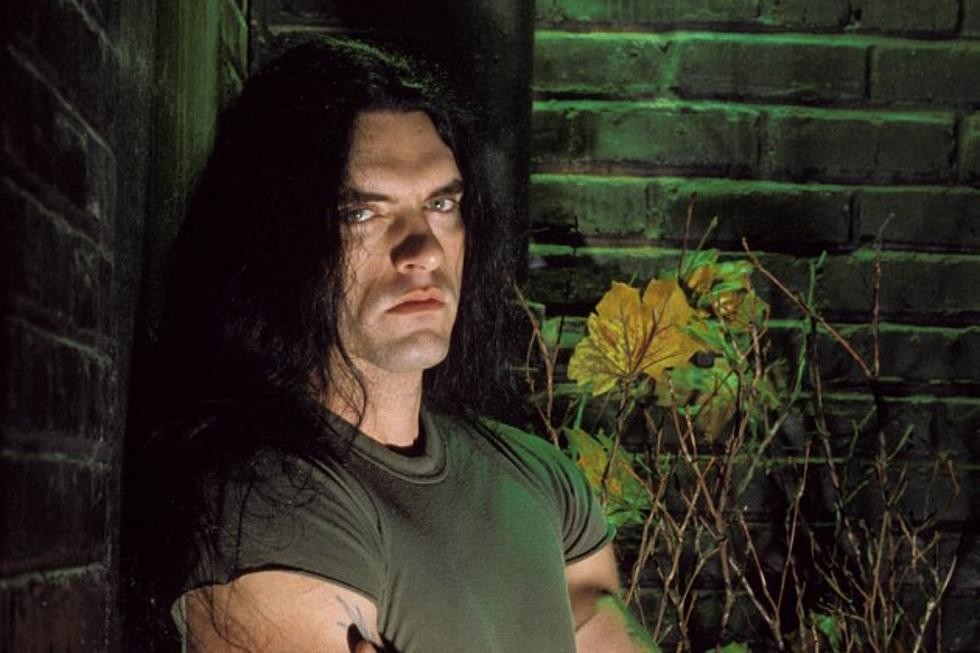Peter Steele, a name synonymous with Gothic Metal, remains an enigmatic figure more than a decade after his passing. As the towering frontman of Type O Negative, Steele captivated audiences worldwide with his haunting baritone vocals, vampiric stage presence, and imposing 6ft 8inch frame. But what exactly did Peter Steele do that cemented his place as a legend in the metal world? This article delves into the multifaceted career and life of this iconic musician, exploring his contributions to music and the tragic circumstances surrounding his untimely death.
Born Petrus Thomas Ratajczyk in Brooklyn, New York, Steele’s upbringing in a devout Catholic family, as the youngest of six children, deeply influenced his artistic journey. While he later identified as an atheist for much of his life, these early religious roots resurfaced in his later years. Before achieving fame with Type O Negative, Steele honed his musical talents in two earlier bands. He first emerged in the heavy metal scene with Fallout, and then pushed boundaries with Carnivore, a politically charged thrash band. In both projects, Steele showcased his dual talents as bassist and vocalist, tackling provocative lyrical themes including racism, misogyny, war, and social injustice. These early endeavors, though short-lived in mainstream success, were crucial in shaping Steele’s distinctive artistic voice and stage presence.
It was in 1989 that Steele, alongside childhood friend Josh Silver, embarked on a musical path that would redefine the metal landscape. Recognizing the burgeoning Gothic genre, they formed Repulsion, soon renamed Type O Negative. Drawing inspiration from the dark atmospheres of Black Sabbath and the songwriting prowess of The Beatles, Steele crafted a unique sound. He blended melodic elements reminiscent of 1970s rock with darker, more sinister undertones, creating a sonic landscape that was distinctly his own. This innovative approach was further amplified by his deeply personal and often taboo lyrical content, exploring themes of addiction, death, and heartbreak with unflinching honesty. Type O Negative’s music resonated deeply with a growing audience seeking something beyond the conventional metal fare.
While pioneering the Gothic Metal genre and laying the groundwork for future artists like Nightwish and Cradle of Filth, Steele maintained a grounded existence. For five years after Type O Negative’s inception, he worked full-time for the New York City Department of Parks and Recreation. Driving garbage trucks, snowplows, and steamrollers, Steele’s blue-collar job ironically became intertwined with the band’s identity. His green work uniform is said to have inspired Type O Negative’s signature color scheme and even Steele’s “Green Man” moniker. It wasn’t until 1994, after an invitation to tour with Mötley Crüe, that Steele finally dedicated himself fully to music, leaving his day job behind.
This transition marked a turning point in Steele’s personal life. The pressures of fame and touring contributed to a descent into drug and alcohol abuse. Known for his self-proclaimed lifestyle of excess, Steele’s health began to suffer. His unpredictable behavior and lavish demands became so concerning that his bandmates had to plan events cautiously, constantly worried about his well-being. Alcohol dependency became a significant issue, initially perceived as indulgence, but later revealed to be rooted in Steele’s persistent struggles with anxiety and stage fright – a battle he never truly overcame.
Despite personal turmoil, Type O Negative’s musical evolution continued. Steele was determined to transcend the “Gothic” label, pushing the band’s sound into more expansive territories. Their discography began incorporating elements of hardcore, thrash, and industrial metal. This stylistic risk proved successful, broadening their fanbase and solidifying their reputation as a musically diverse and innovative act. Type O Negative achieved significant commercial success, selling over 2.5 million albums worldwide and solidifying their place in metal history.
However, Steele’s personal demons persisted. His life was marked by extreme highs and lows, including a suicide attempt, posing nude for Playgirl magazine in 1995, an overdose, and even a fabricated death rumor. Then, in the mid-2000s, a surprising shift occurred: Steele embraced sobriety. He became optimistic and focused, envisioning a long-term future for Type O Negative. He enthusiastically began writing new material for their anticipated eighth album and reconnected with his Roman Catholic faith. Inspired by bands like Mötorhead, Steele aimed to create a lasting musical legacy with Type O Negative.
Tragically, this newfound hope was short-lived. In 2010, Steele contracted the flu, which triggered a series of health complications. Stress from his ailing pet cat further exacerbated his condition. A suspected relapse into alcoholism compounded his health issues, culminating in a fatal aortic aneurysm at his home on April 14, 2010. He was only 48 years old. Despite having written substantial material for a new album, Steele left no recordings or written notes, making it impossible for Type O Negative to complete and release the work posthumously. Devastated by the loss of their frontman and creative heart, Type O Negative disbanded immediately after Steele’s death, declaring that the band died with him.
Peter Steele’s impact extends far beyond album sales and chart positions. He was a true innovator who helped define and popularize Gothic Metal. His haunting vocals, introspective and often controversial lyrics, and commanding stage presence inspired countless musicians and continue to resonate with fans worldwide. Peter Steele did more than just make music; he created an atmosphere, an aesthetic, and a legacy that endures within the metal community and beyond. His influence on the genre and the hearts of his fans remains profound and unforgettable.
What are your reflections on Peter Steele’s contributions to music? Share your thoughts in the comments below.

